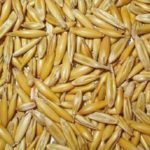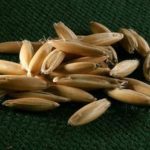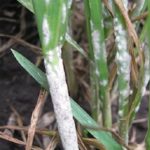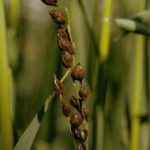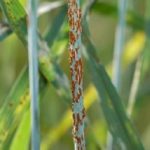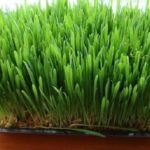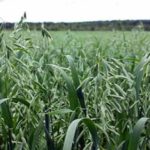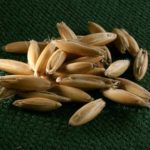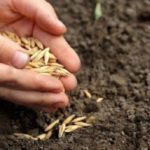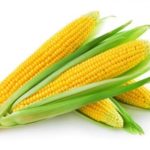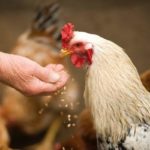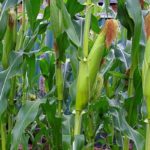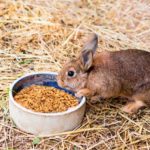Spring oats of the Skakun variety are a type of grain crop obtained by hybridization of two varieties - Fraser (Canada) and Astor (Netherlands). The development of the variety was carried out by specialists from the Research Institute of Agriculture of the Non-Black Earth Zone (Moscow region) with the participation of the Ulyanovsk Research Institute of Agriculture (Ulyanovsk region). Oats of this type were included in the register of varieties approved for cultivation in 1988.
Characteristics and description of the variety
Skakun oats are a mid-season variety. Plant height varies from 78 to 108 centimeters.The grains are large in size, have a leveled shape, and the level of filminess is characterized as low. The panicle of the crop is semi-compressed and erect. It has a white color with a yellowish tint. The plant is characterized by slight awning.
The scales covering the ear are of medium size. This variety of oat differs from other varieties by the presence of pubescence on the upper node of the stem. The average oat yield reaches 6.2 tons per hectare, the maximum is 7.95 tons per hectare.
Positive and negative sides
Experts consider the main advantages of culture to be:
- high productivity;
- stable yield;
- resistance to many phytopathologies;
- frost resistance;
- high technological quality of grain;
- reduced filminess;
- high protein content - about 14%;
- resistance to lodging and shedding.
The only disadvantage of the culture is intolerance to high temperatures. A critical indicator for a plant is the level of air heating to +40 °C or higher.
Growing and caring for Skakun oats
There are no fundamental differences in growing and caring for the variety of cereal in question from generally accepted standards. It is necessary to take a responsible approach to choosing a site for sowing grain, paying attention to the composition of the soil. Otherwise, cultivating oats of this type does not present any difficulties.
Basic recommendations for growing:
- Areas that previously grew winter grain crops, legumes or corn are suitable for sowing grain. In the fields, the predecessors of Skakun oats are often sugar beets. But this is not the best option, since such a crop dries out the soil.
- Before sowing oats, the soil is plowed to a depth of at least 25 centimeters.
- Before planting the crop, the soil is fertilized with phosphate rock in order to normalize acidity. If the soil is peaty, compounds based on boron, manganese, and copper are added.
- For sowing, you need to take the best seeds located at the bottom of the ears. They are large in size and sprout quickly.
- To prevent the development of phytopathologies, planting material is soaked in a solution of potassium permanganate for 20 minutes before sowing.
- Sowing is carried out at the end of April, while the soil is still moist. If planting is delayed, crop yields may decrease by 15%.
Diseases and pests
Skakun is an oat variety that resists diseases well. But still, it is not protected from some phytopathologies and pest invasions. The most common of them:
- Hard smut of oats. Phytopathology is of fungal origin and is treated with fungicides.
- Dusty oat smut. Caused by a smut fungus, it is treated with fungicidal drugs like Scarlet, Rakzan or Corriolis.
- Powdery mildew. Oats are relatively rare and can be eliminated with the help of biological preparations - Fitosporin-M, Planzir or others.
- Anthracnose. A fungal infection affects oats, which grow mainly in humid climates.Signs of phytopathology can be eliminated with the help of “Fundazol”, “Fitosporin”, “Polyram”.
- Septoria. Its development is provoked by an imperfect fungus. It is treated by using Bordeaux mixture, Nitrofen, Phthalan, Profit or their analogues.
Thus, the crop variety in question is affected by those phytopathologies and pests that can attack other varieties of oats.
Harvest and storage
Skakun oats ripen approximately 88-104 days after sowing. But you shouldn’t expect friendly maturation. First, the grains ripen in the upper part of the panicle, then in the lower part.
At home, the spikelets are cut with a sickle, tied into small bunches and stored in a well-ventilated, dry area. Agricultural enterprises use special equipment to harvest the crop, after which the oats are sent for drying in elevators. Then one part of the grains is sent for processing, the other remains as seed for the next year, and the third is exported or put on the market for further sale.

